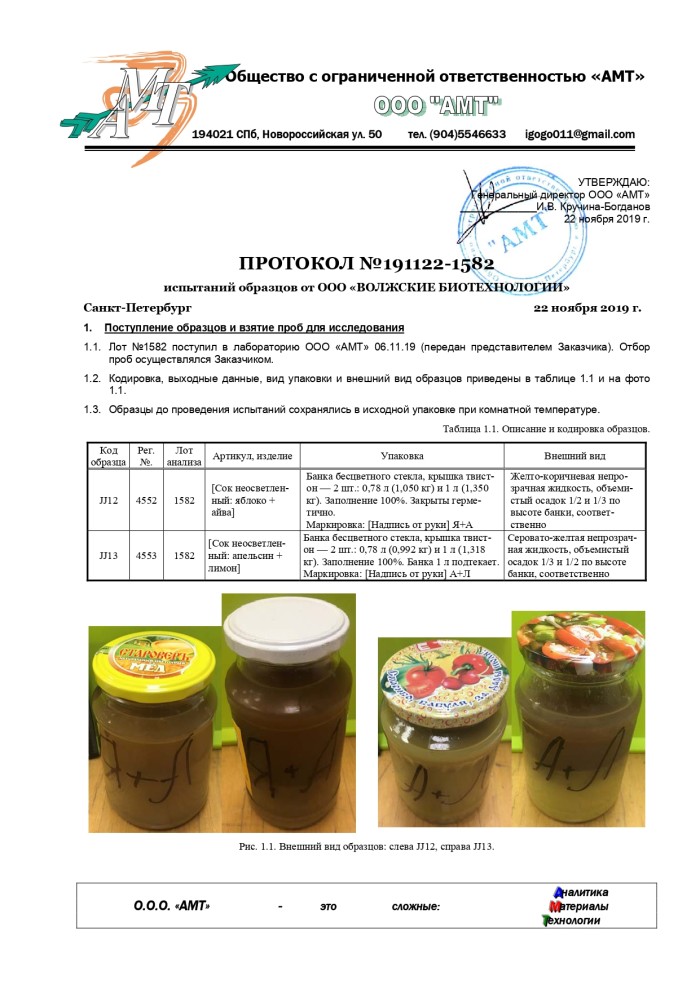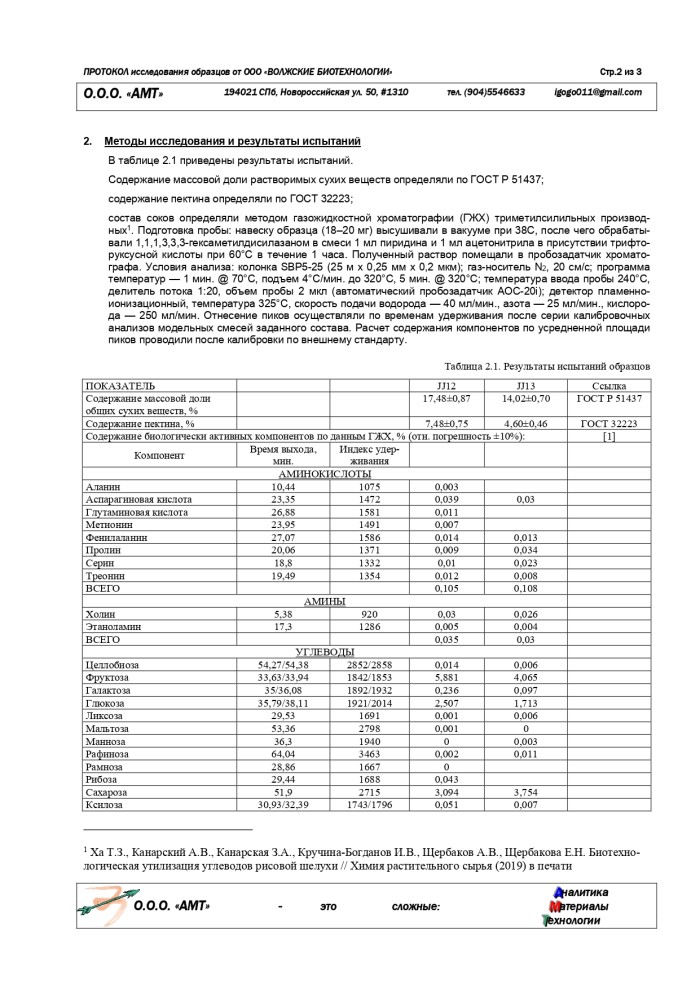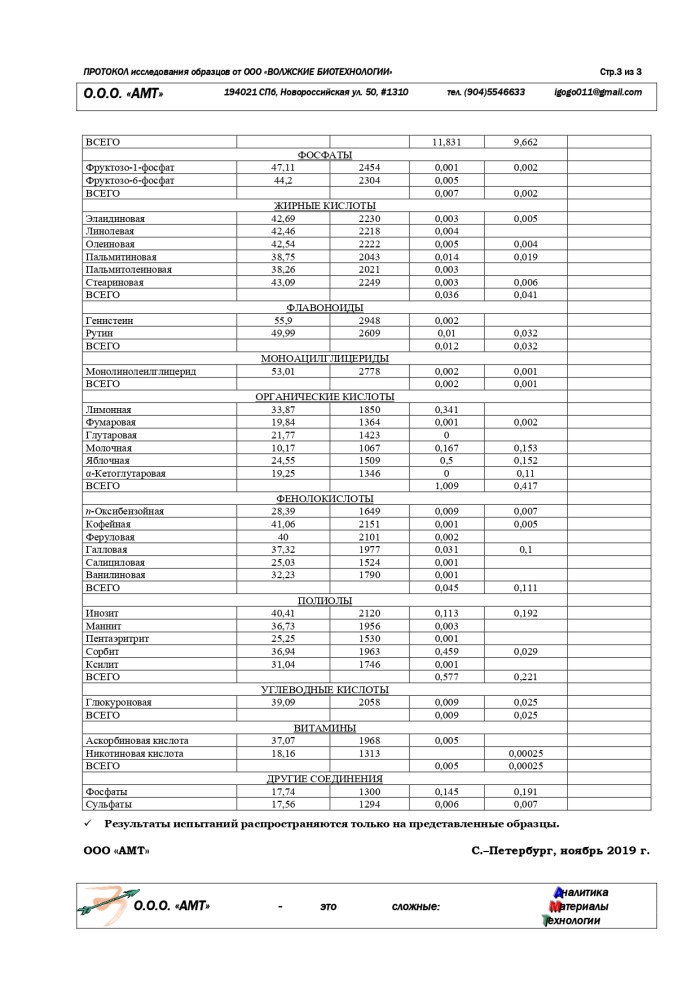
Home List your patent My account Help Support us
Pectin production technology
[Category : - OTHER]
[Viewed 777 times]
The invention relates to the technology of production of pectins with increased biological value.
Pectin preparations containing a polyuronide component, in which over 95% have high biological activity and can be used in the food and confectionery industry, as well as in the production of pharmaceuticals as an active protective bio-shell.
The proposed technology of low-temperature hydrolysis under cyclic temperature conditions makes it impossible to degrade the feedstock as a biomaterial. This significantly increases the complexing ability of pectins, which makes it possible to use drugs based on them as enterosorbents. Reducing the hydrolysis temperature to +5oC makes it possible to preserve, practically, the entire bio-vitamin complex at the level of the feedstock. A decrease in the biological activity of enzymes and vitamins in the resulting pectin product, within any significant limits, is not observed, even under long-term storage conditions. The invention excludes the use of acids, alkalis and metal salts in the smallest quantities in this technology and is positioned within the production of natural and environmentally friendly products.
Vegetable products with a high content of pectin are used as raw materials. Pumpkin, sugar beet, quince, grapefruit, apples, pears, lemons, oranges, tangerines, zucchini, squash, etc. should be attributed to T3S. Pectin preparations obtained from the listed raw materials have perfect uniqueness and allow their use in medicine, pharmaceuticals, food and confectionery industries. The present invention provides for the use of endogenous amylalytic type enzymes in the proposed technology, the highest activity of which is achieved by the instability of the temperatures of the technological process. The specified temperature range allows you to control the technological process in order to maximize the activation of the enzymes of the hydralase group in the catalytic process of enzymatic hydrolysis of complex polysaccharides. The perfect natural specificity of natural enzymes implies the use of the widest spectrum of enzymes in the technological process of amylalytic catalysis. The initial product used in enzymatic biocatalysis is a closed-type biological system, which ultimately determines the use of enzymes of a given orientation. Typical representatives of such bioactivators are hydralases, the amylalytic orientation of which is specific by definition. Hydralases in biosystems of this type are represented by enzymes that provide biocatalysis of the entire system as a whole, and, due to their unique specificity, they catalyze proteins, fats, polysaccharides and disaccharides.
Hydralases. in the case under consideration, they are represented by carbohydrazes, esterases, proteases, the catalytic orientation of which is extremely selective in the technological process. Carbohydrazes, having amylalytic specificity, catalyze starch with amylase, cellulose with cellulase, protopectin with protopectinase, pectin with pectase. Esterases, in turn, catalyze vegetable fats with the lipase enzyme. Proteases by enzymes proteinase, polypectidase and dipectidase catalyze plant proteins. Plant raw materials as a biological system, subjected to enzymatic hydrolysis, ceases to exist as a whole, and passes into a completely different quality. The new biological system has the qualities of a whole complex of separately taken complex organic substances. Thus, enzymatic activity made it possible to obtain polysaccharides, monosaccharides. amino acids and plant fibers in an unrelated form at the molecular level.
Polysaccharides, in this case, are represented by a pectin group, monosaccharides-glucose, fructose, disaccharides-lactose and maltose, a protein amino acid group, which, depending on the feedstock, can be widely represented. The combination of pectins, monosaccharides and amino acids of the same biosystem significantly increases the biological activity of the product. This activity is achieved due to the synergistic effect due to the presence of pectins, monosaccharides and amino acids in a single biological complex. The gelling ability of the pectin complex is very high and allows the product (jelly) to be subjected to multiple cycles of alternating temperatures without reducing the quality and consumer properties of the product. The organoleptic properties of pectins obtained by low-temperature hydrolysis technology do not significantly change in relation to the initial raw material. The complexing ability of pectins from these raw materials is quite large and reaches a value of KC 240 The degree of esterification of pectins in the proposed technology is very large and reaches values within the range of CH not less than 80-9094
The formula of the invention
Alcohol-free technology for producing pectin based on the use of enzymatic hydrolysis. instead of high-temperature acid-base has a number of advantages over the classical production scheme:
losses of pectin in the technological process are minimized, - exclusion of acid-resistant and alcohol equipment from the hardware scheme of the technological process,
-absence of the neutralization and de-etherification process as separate technological cycles,
-the use of temperature regimes of the process that do not lead to the loss of biological activity of enzymes and vitamins, the absence of protein denaturation (amino acid group),
low energy intensity of production, -low cost of the product,
- ecological purity of the product, reduction of the category of fire and explosion safety of production from category A to D.
 Patent publications:
Patent publications:No publication
Asking price:
Make an offer
Make an offer



[ Home | List a patent | Manage your account | F.A.Q.|Terms of use | Contact us]
Copyright PatentAuction.com 2004-2017
Page created at 2025-11-27 18:13:08, Patent Auction Time.
 Great invention
Great invention